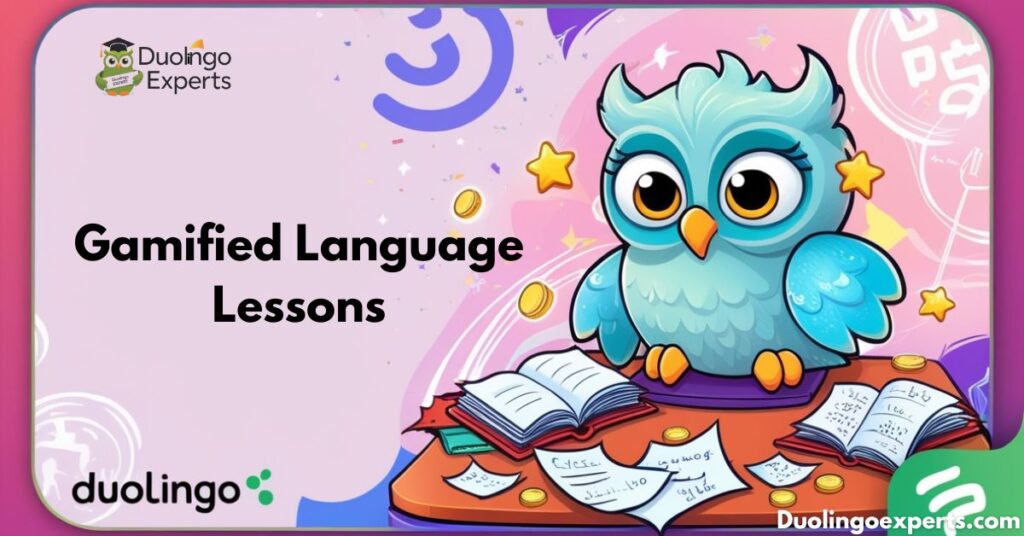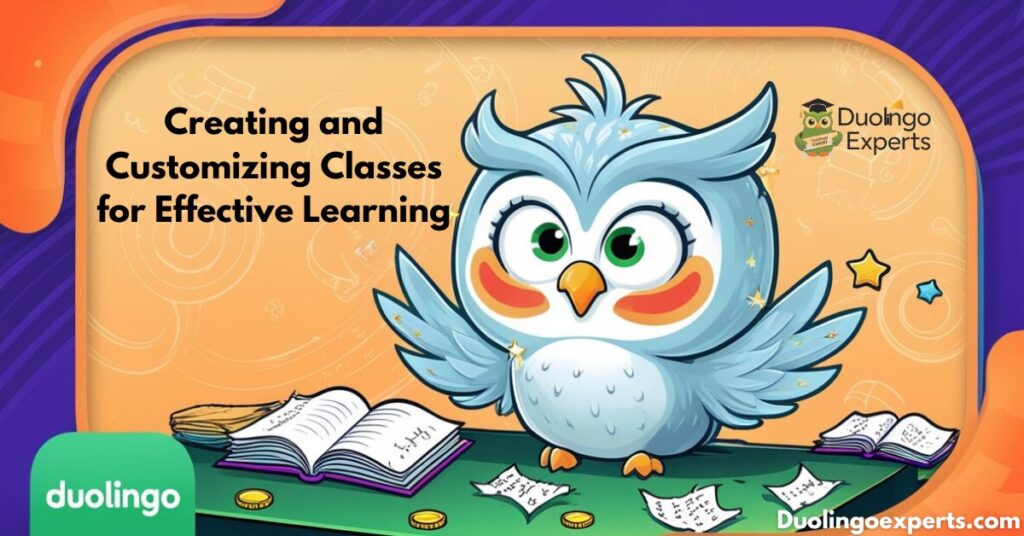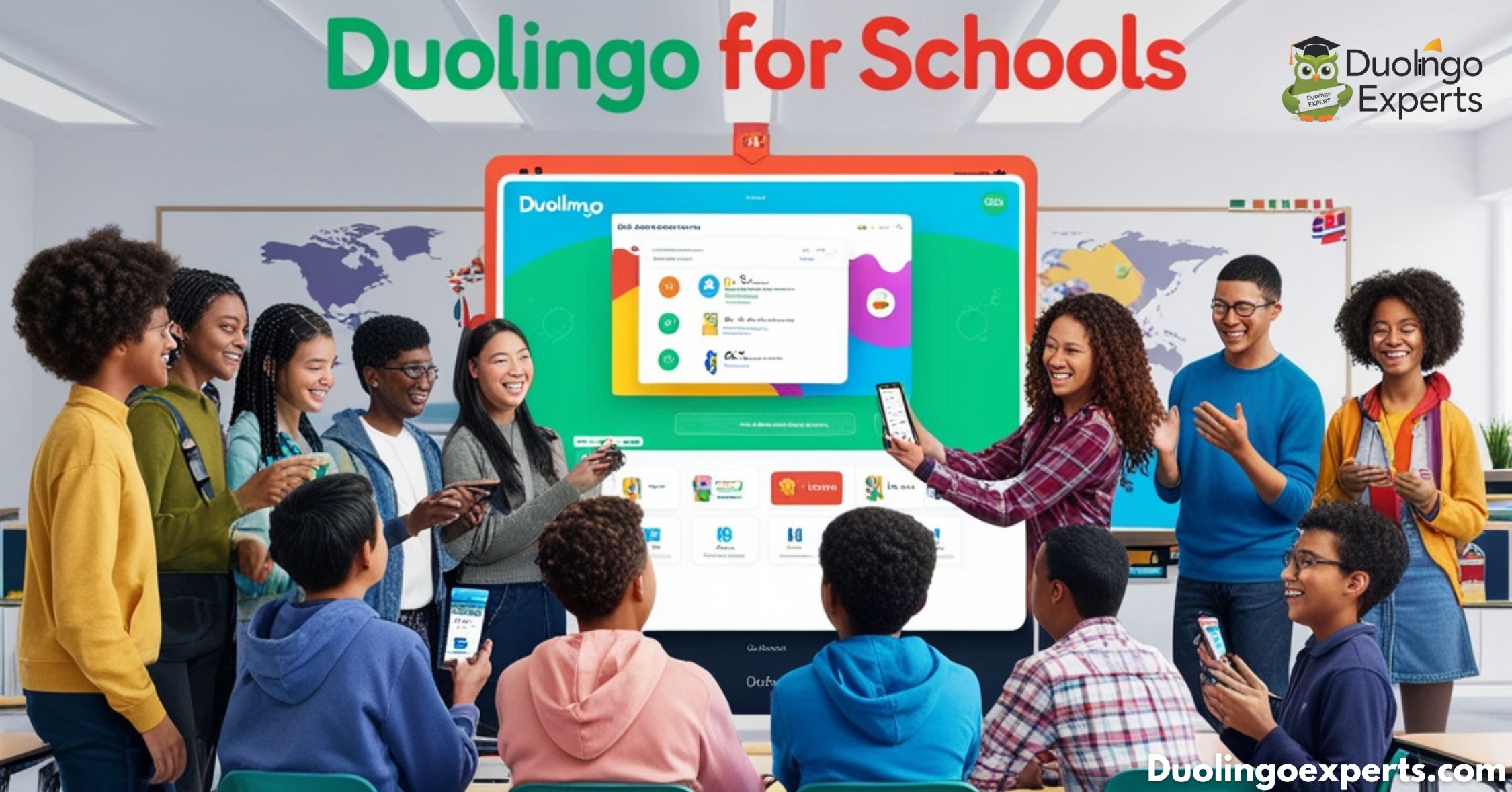Language learning has evolved dramatically over the past decade, thanks to innovations in educational technology. One standout in this transformation is Duolingo for Schools, a gamified language learning platform designed to make language acquisition both fun and effective for students and educators alike.
Duolingo’s unique approach to personalized learning, adaptive lessons, and its standards-aligned curriculum have positioned it as a leader in language education. This platform empowers teachers with powerful classroom management tools while keeping students engaged through its game-like features.
In this blog post, we’ll dive deep into the various features and benefits of Duolingo for Schools, how it supports language education, and why it’s become one of the most powerful tools for teaching foreign languages.
A Personalized Learning Experience with Adaptive Lessons
One of the standout features of Duolingo for Schools is its ability to provide personalized learning experiences through adaptive lessons. This system uses sophisticated artificial intelligence (AI) to analyze each student’s progress and adjust lessons accordingly. Whether a student struggles with verb conjugation or excels at vocabulary, Duolingo tailors its content to match individual needs.
How Adaptive Lessons Work
The platform’s AI-driven engine adjusts the difficulty level based on the student’s performance. If a student consistently answers questions correctly, they are presented with more challenging exercises. Conversely, if a student is struggling, the system provides simpler tasks or additional practice to reinforce concepts. This adaptive model helps ensure that no student is left behind while also maintaining an engaging learning experience for more advanced learners.
Real-World Example:
Imagine a high school student learning Spanish. If they struggle with gendered nouns in the early stages, Duolingo identifies this gap and adapts the lessons to include more exercises focused on this area. As they improve, the system begins to introduce more complex grammar rules, helping the student advance at their own pace.
Gamified Language Lessons: Engagement at its Best

One of the reasons Duolingo for Schools has gained such popularity is its use of gamified learning techniques. Students don’t just “study” the language; they play it. Through leaderboards, challenges, and rewards, Duolingo turns the often daunting task of language learning into a fun, competitive, and highly motivating experience.
Features of Gamified Language Lessons
- XP Points: Students earn XP for completing lessons and exercises, which creates a sense of accomplishment.
- Streaks: A visual representation of how many days in a row a student has engaged with the platform.
- Leaderboards: Class and global leaderboards encourage students to stay active and compete in a fun way.
- Challenges and Rewards: Timed challenges and rewards (like earning “hearts” for completing lessons) provide students with tangible incentives to keep going.
The Power of Gamification
Incorporating game-like features into language education helps foster intrinsic motivation. Studies show that gamified learning platforms can boost student engagement and increase retention rates. By making language lessons interactive and rewarding, Duolingo creates an environment where students are more excited to learn and continue their language learning journey.
Standards-Aligned Curriculum: Supporting Educators
Duolingo for Schools isn’t just about fun and games; it’s also deeply aligned with educational standards. Whether you’re working with the ACTFL (American Council on the Teaching of Foreign Languages) guidelines or the CEFR (Common European Framework of Reference for Languages), Duolingo provides a standards-aligned curriculum that helps teachers ensure their students are making measurable progress.
Why This Matters for Teachers
For educators, aligning lessons with established language proficiency guidelines ensures that students are mastering the right skills at the appropriate level. Duolingo’s standards-aligned curriculum follows frameworks such as the ACTFL and CEFR, which means that teachers can be confident they are teaching content that meets internationally recognized language education standards.
Key Benefits:
- Duolingo provides a curriculum map that helps teachers integrate the platform seamlessly into their lesson plans.
- Teachers can track student proficiency levels and ensure that students are on the right path to meet established language proficiency goals.
- The platform also helps track progress towards CEFR levels (A1, A2, B1, B2, etc.), which is critical for schools with formal language assessment requirements.
Empowering Teachers with Classroom Management Tools
Effective classroom management is critical for any educator, and Duolingo provides an array of tools to help manage and monitor student progress.
Key Classroom Management Features
- Class Creation and Student Enrollment: Teachers can easily create classes and enroll students in just a few clicks.
- Student Monitoring: Teachers can monitor student progress in real-time, seeing how each student is performing in their language learning.
- Custom Assignments: Teachers can assign specific exercises, review lessons, or create customized assignments tailored to the needs of their class.
- Progress Insights and Reporting: Duolingo provides in-depth progress insights, including data on each student’s proficiency, activity level, and completion rates.
Benefits for Teachers:
- Time-Saving: With automated grading and progress tracking, teachers save significant time that would otherwise be spent on manual assessments.
- Targeted Support: Teachers can identify students who need extra help and adjust their lessons accordingly.
- Increased Collaboration: The ability to share progress reports and assignments fosters collaboration between teachers and students.
Creating and Customizing Classes for Effective Learning

One of the most powerful aspects of Duolingo for Schools is the ability to customize classes. Whether you have a group of beginners or advanced learners, you can tailor lessons to suit the unique needs of your students.
Customizing Classes:
- Create Multiple Groups: Teachers can create several different classes, such as beginner, intermediate, or advanced levels, and assign lessons based on each group’s proficiency.
- Assign Tailored Lessons: Based on each student’s progress, teachers can create custom lessons or focus on specific areas where students need more practice.
- Interactive Assignments: Teachers can create personalized assignments that reflect the specific skills they want to work on, whether it’s vocabulary, grammar, or listening comprehension.
Example:
A teacher might create a beginner-level class focused on basic vocabulary and pronunciation, while a more advanced class might focus on conversational skills or complex grammatical structures.
Assignments, Quizzes, and Customization for Tailored Learning
With Duolingo for Schools, educators can create assignments and quizzes that cater to the specific needs of their students. This flexibility allows for tailored learning, ensuring students stay engaged and challenged.
How Custom Assignments Help:
- Targeted Practice: Teachers can assign specific practice exercises based on the student’s performance data, ensuring that students are practicing the areas where they need the most help.
- Quizzes and Tests: Teachers can create quizzes that assess understanding of specific lessons or concepts.
- Review Tasks: Duolingo provides the option to set review tasks, reinforcing past lessons and improving long-term retention.
The Value of Customization:
By tailoring lessons and assignments, educators can address individual learning styles and pace, ensuring that each student is receiving the right level of challenge and support.
Progress Insights and Reporting: Data-Driven Decision Making
One of the most powerful features of Duolingo for Schools is the progress insights and reporting tools that provide real-time data on student performance. These tools help teachers make data-driven decisions about how to adjust their teaching strategies and support students effectively.
Key Reporting Features:
- Student Proficiency Levels: Teachers can track each student’s language proficiency based on ACTFL or CEFR standards.
- Engagement Tracking: Duolingo tracks the frequency and consistency of student engagement, helping teachers identify students who may need additional motivation or support.
- Performance Analytics: Detailed reports on student performance help teachers identify trends and adjust lesson plans accordingly.
Benefits:
- Teachers can make real-time adjustments to their teaching strategies based on accurate data.
- Progress insights help educators celebrate achievements and motivate students to keep improving.
- Data-driven reports allow for more targeted interventions when students are falling behind.
Frequently Asked Questions
Is Duolingo for Schools really free?
Yes, Duolingo for Schools is completely free. There are no hidden fees or costs for teachers or students to use the platform. This makes it an accessible option for schools and educators worldwide.
Can existing Duolingo users join Duolingo for Schools?
Yes, existing Duolingo users can easily integrate their personal accounts with Duolingo for Schools. Teachers can link their personal accounts to the school version, allowing them to track student progress while still enjoying the personalized features of the app.
What age group is Duolingo for Schools suitable for?
Duolingo for Schools is designed for K-12 and higher education students, making it suitable for learners of all ages. The platform adapts to different levels of proficiency, from beginner to advanced.
What languages are available on Duolingo for Schools?
Duolingo offers a variety of languages, including Spanish, French, German, Italian, and many others. Teachers can choose which languages they want to teach, and students can learn multiple languages at once.
How secure is student data on Duolingo for Schools?
Duolingo is committed to student privacy and follows strict data security protocols to protect personal information. Schools can rest assured that their students’ data is secure.
Can you use Duolingo in Schools?
Yes, Duolingo can be used in schools through Duolingo for Schools, a free platform designed specifically for educators and students. It provides teachers with tools to manage classrooms, track progress, and assign personalized language lessons.
Does Duolingo for Schools give unlimited hearts?
Yes, Duolingo for Schools provides unlimited hearts, allowing students to practice without worrying about running out of attempts. This feature ensures a more flexible and stress-free learning experience.
How to Get Started with Duolingo for Schools
Getting started with Duolingo for Schools is quick and easy. Teachers can sign up for a free account, create their classroom, and start assigning lessons. Here’s how:
- Sign Up: Visit the schools.duolingo / Duolingo for Schools sign-up page and create an account.
- Create Your Class: After logging in, teachers can create their first class and add students.
- Assign Lessons: Teachers can customize assignments and monitor student progress using the built-in tools.
- Start Learning: Students can log in and begin their language learning journey with tailored lessons and gamified elements.
Conclusion: Maximize Language Learning Success with Duolingo for Schools
In conclusion, Duolingo for Schools is a powerful and engaging tool for educators looking to enhance their language education programs. Its adaptive lessons, gamified learning features, and standards-aligned curriculum make it a comprehensive solution for language learning in the classroom. Teachers have access to powerful tools for classroom management, student monitoring, and customized assignments, while students benefit from a personalized learning experience that motivates them to achieve their language goals.
By integrating Duolingo for Schools into their classrooms, educators can provide students with the tools they need to succeed in their language learning journey, all while saving time and effort on grading and lesson planning.
>>>Read Also: Duolingo Owl Threats: Are the Messages from Duolingo Really Dangerous?

DuolingoExperts, managed by MarkJohan, offers expert insights and tips for mastering languages. A tech-driven platform to enhance your learning experience.

